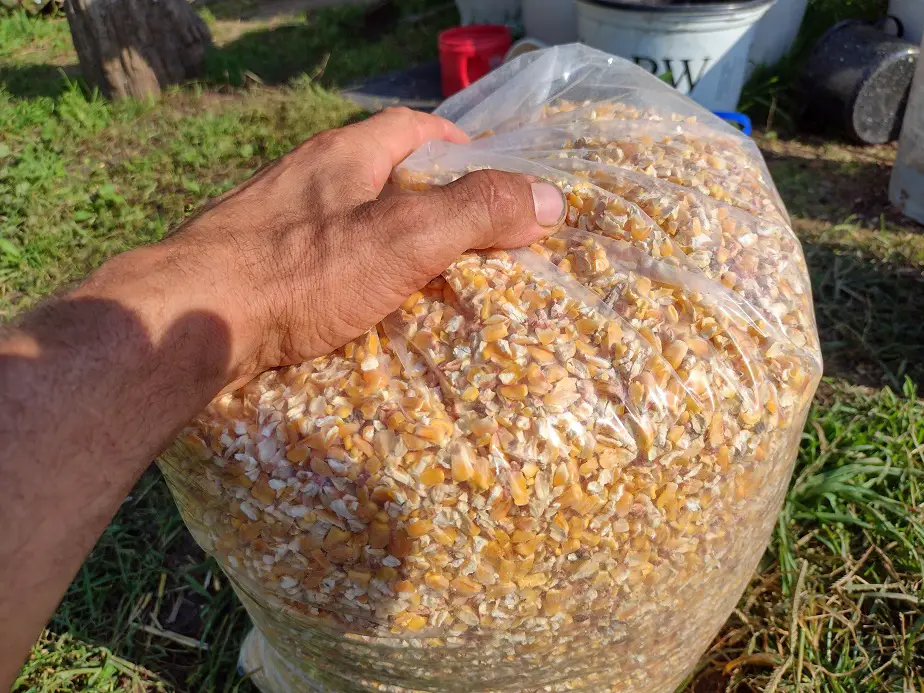I’ve experimented a lot with cracked corn and certainly have some opinions.
Pigs can eat cracked corn but it’s not nutritionally complete and pigs won’t digest it adequately unless it’s been well-soaked or fermented. Feeding only cracked corn will result in fat, unhealthy, and sick pigs. Fermented cracked corn can be a decent feed base for pigs, depending on breed and age.
Let’s go over the pros and cons, and some alternative methods.
Is Cracked Corn Good for Pigs?
Cracked corn isn’t great for pigs, but it’s not bad either. Cracked corn digests about 10 percent less efficiently than pellets. Cracked corn lacks many essential vitamins and amino acids pigs need. It’s also low in fiber and high in carbs for mature pigs. Corn is the primary feed ingredient for pigs in the US so it’s not harmful.
I have bought cracked corn by the half-ton for my pigs. My neighbor sells both whole corn and cracked corn for the same price so it wasn’t any extra expense. I fed a lot of cracked corn to our first pigs. That, plus kitchen scraps did fair. The pigs looked decent by the end of the season.
If you work to keep a fairly balanced diet for your pigs, then cracked corn as part of their diet isn’t going to hurt them. But, you will go through more pounds of a cracked feed than a finely ground or pelleted feed.
Cracked corn is actually said to improve a pig’s digestion trac, health, and to reduce the prevalence of gastric lessions and ulcers that are fairly common with pigs raised on commercial pig feed. But, most farmers still don’t see a cost savings in it.
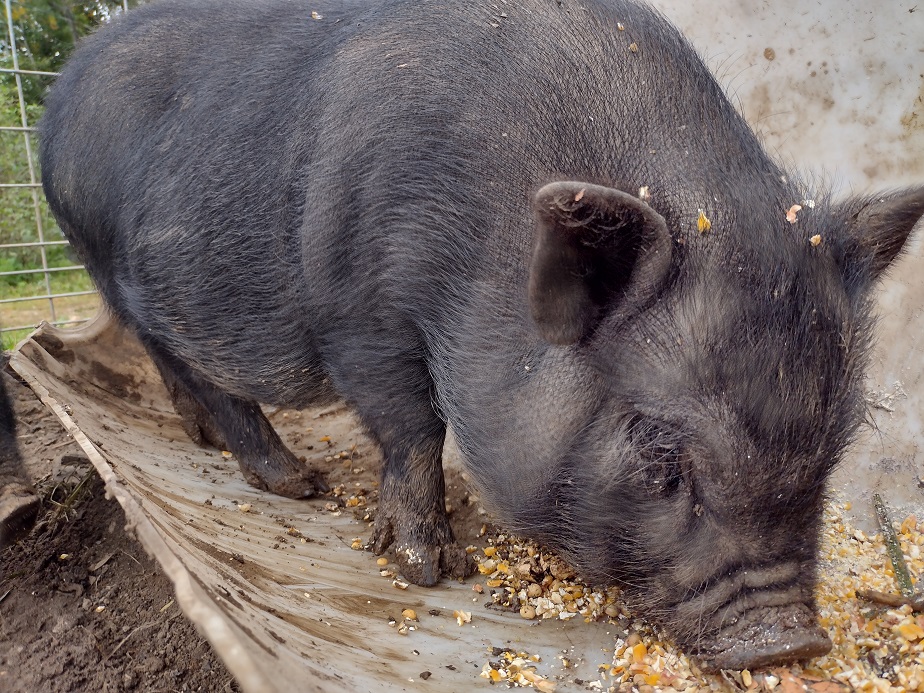
Can Pigs Digest Cracked Corn?
I’ve read in several places that adequate processing of grains for pigs increases digestibility by around 10 percent compared with unprocessed feed. Cracked corn is usually considered nearer to an unprocessed grain. I would agree with that. It’s probably around 3 percent more digestible than un-cracked corn.
Here’s a quote from a darn good research paper on the digestibility of corn for pigs.
“In finishing pigs, a 1.2 to 1.4% of improvement in feed efficiency occurs for each 100-μm (1/10 millimeter) reduction in the particle size of corn. While decreasing particle size is an important economic factor in overall feed cost per pig, several studies have shown an increase in stomach lesions with a reduction of diet particle size. These increases in stomach lesions can lead to higher mortality from ulcer development.”
SM Williams, CB Paulk, JD Hancock, S Issa, and TL Gugle, 2010. Swine day, Kansas State University, Report progress 1038: 115-118.
Pigs can digest cracked corn fairly well, but they have trouble digesting hull unless it’s been processed by grinding finely or fermenting. Cracking alone isn’t enough processing to make the hull more digestible. The hull contains valuable starch and protein and steps should be taken to ensure it’s properly digested.
In a less technical report, I can plainly see some of the cracked corn remains in my pig’s excrement. Not so when finer ground or further processed.
Here’s a scholarly report on the matter if you are interested. Effects of cracked corn on growth performance and stomach lesions in finishing pigs
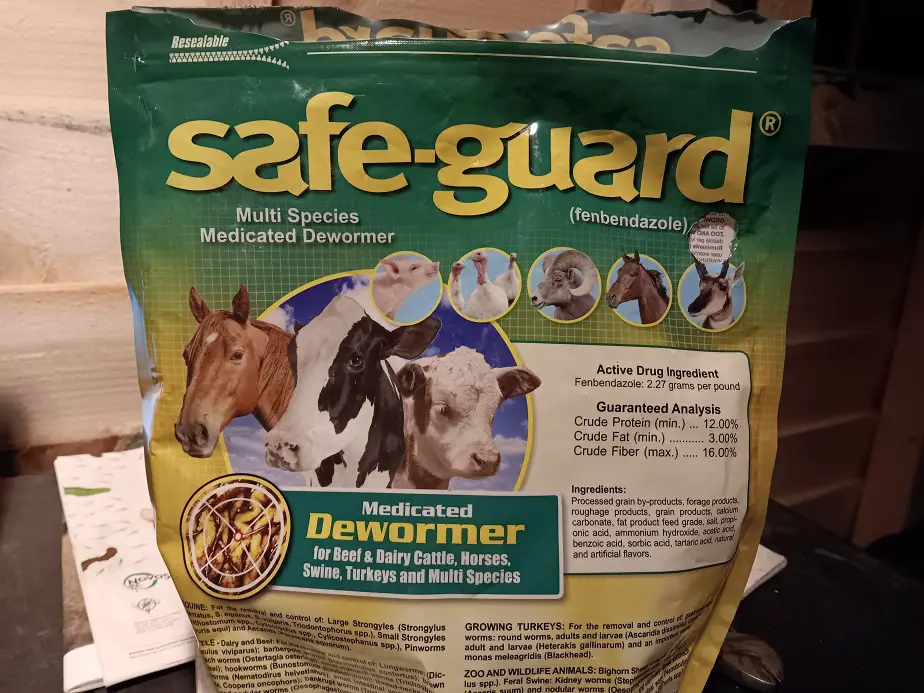
One thing you need for pigs, no matter your raising system, is a parasitic worm treatment. The best swine dewormer is Fenbendazole. It’s known by the brand name Safeguard. Safeguard is available as a medicated corn/alfalfa pellet. It’s the only way I can worm my pigs since they won’t stand still for an injection of Ivermectin. It’s easy and cheap.
- There is a stronger pellet for swine only. Here it is on Amazon
- There is a weaker pellet for general barnyard livestock, including swine. Here it is on Amazon.
I use the multi-species version because it’s what’s available in my local store and I can use it for my chickens too. It’s the most effective swine wormer and the easiest to administer. I use it on all weaned piglets and adults twice a year. Don’t go without it.
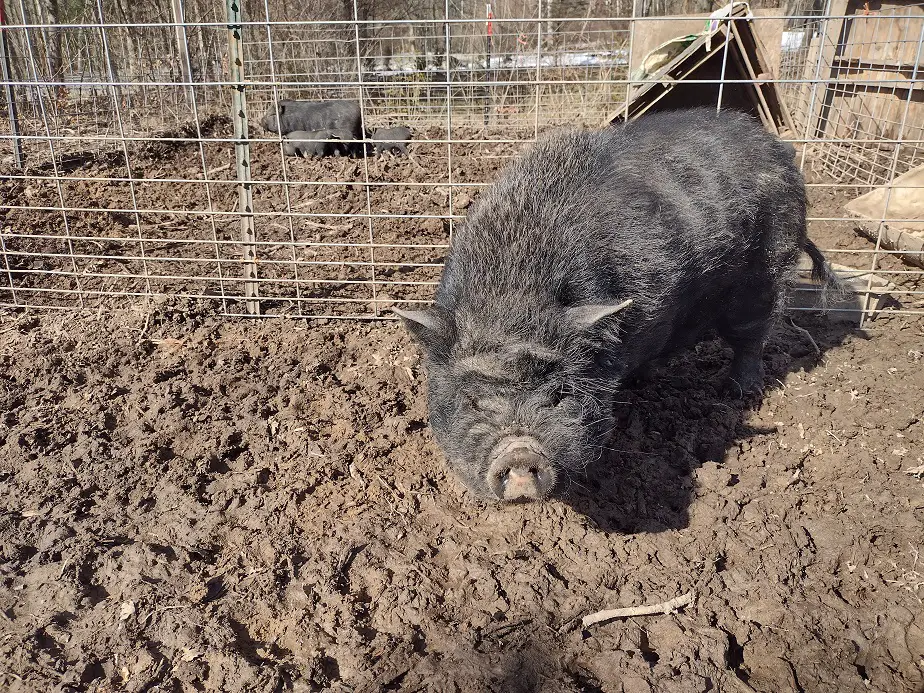
Will Pigs Get Fat on Cracked Corn?
Feeding a pig some cracked corn should not make it fat, but feeding only cracked corn will. In cracked corn, the abundance of simple starches tend to cause pigs to produce more fat. Being low in protein it can cause slow muscle gains, resulting in a higher fat-to-muscle ratio.
If you free-feed or overfeed cracked corn, yes, I would expect your pig to get fat. I know a farm where the pig primarily eats cracked corn that falls from the gravity wagon. It gets all it wants. The pig is royally fat and would have made a medieval peasant leap for joy (fat pigs were desirable then).
I feed my pigs tons of corn, but as I mentioned above, We ferment it first. That makes a world of difference. Fermenting converts the sugars to protein and makes the digestion-resistant hull of corn easy for a pig’s gut to handle. Fermenting is the way to go if you want a cheaper feed option.
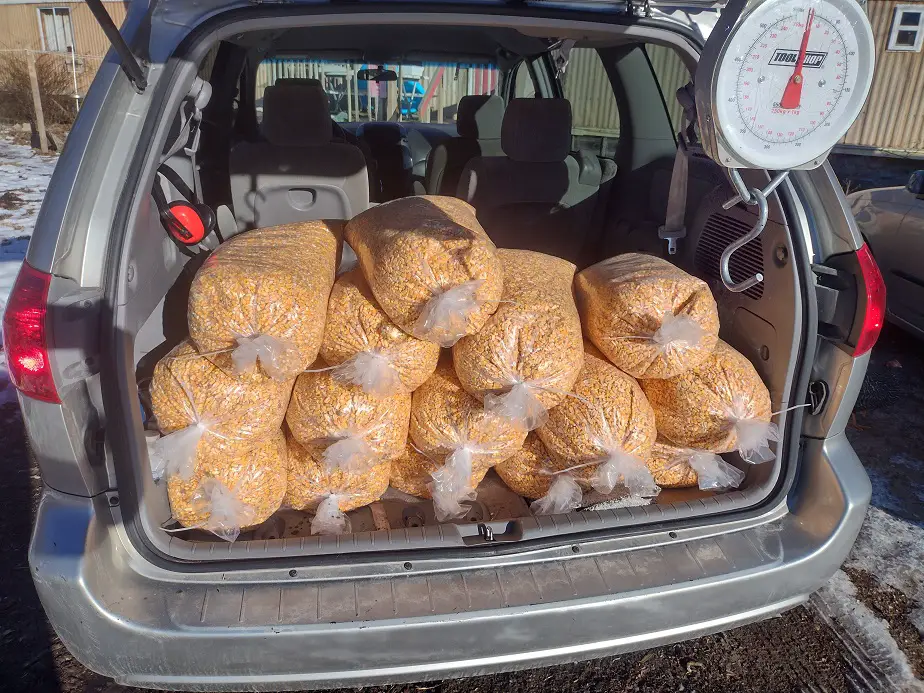
Cracked Corn vs Whole Corn for Pigs.
Cracked corn is slightly more costly and slightly more digestible than whole corn for pigs. Both require additional processing to be fully utilized by swine. Since both benefit equally by fermenting, whole corn is the more practical and affordable option if you want to save money on pig feed.
There is no difference between the two in the nutrition of the grain, but the small difference in digestibility between cracked corn and whole corn is worth mentioning. Adequately processed corn has a lot more to offer as a functional pig feed ingredient.
These days, I simply buy whole corn even though I can get both whole and cracked at the same price. You might wonder why if the cracked corn should be slightly more digestible, and thus more efficient. The key for me is in the fact that whole corn lasts better in storage and doesn’t lose as much energy value as cracked.
I buy corn approximately every 6 months. Oxidization, especially of the grain oils, begins quickly and is noticeable a few months after cracking. Whole corn is good as new after 6 months in storage, as logs as I keep the mold and vermin out.
I see no difference in the nutritional digestibility between whole and cracked corn after a proper fermentation. If the cracked corn was more costly, it would have been an even faster decision for me to abandon it.
Want more info on pig feed and feed recipes?

